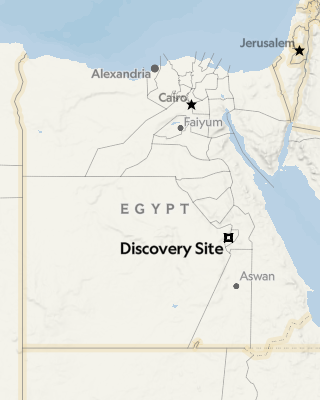Archaeologists hailed Thursday the discovery of "the largest" ancient city found in Egypt, buried under sand for millenia, which experts said was one of the most important finds since unearthing Tutankhamun's tomb.
Three thousand four hundred years ago, a contentious ancient Egyptian king abandoned his name, his religion, and his capital in Thebes (modern Luxor). Archaeologists know what happened next: The pharaoh Akhenaten built the short-lived city of Akhetaten, where he ruled alongside his wife, Nefertiti and worshipped the sun. After his death, his young son Tutankhamun became ruler of Egypt—and turned his back on his father’s controversial legacy.花呗回收,花呗提现/白条回收,白条提现等各种平台额度回收提现+官V: 18070386941 熊总,官网信用保障,最安全靠谱

But why did Akhenaten abandon Thebes, which had been the capital of ancient Egypt for more than 150 years? Answers may lie in the discovery of an industrial royal metropolis within Thebes that Akhenaten inherited from his father, Amenhotep III. The find, which has been dubbed the “lost golden city of Luxor" in an announcement released today, will generate as much enthusiasm, speculation, and controversy as the renegade pharaoh who left it.
Because the city was initially discovered just in September of last year, archaeologists have only scratched the surface of the sprawling site, and understanding where this discovery ranks in Egyptological importance is hard to say at this time. The level of preservation found so far, however, has impressed researchers.
“There’s no doubt about it; it really is a phenomenal find,” says Salima Ikram, an archaeologist who leads the American University in Cairo’s Egyptology unit. “It’s very much a snapshot in time—an Egyptian version of Pompeii.”
The site dates from the era of 18th-dynasty pharaoh Amenhotep III, who ruled between around 1386 and 1353 B.C. and presided over an era of extraordinary wealth, power and luxury. In Amenhotep III’s final years, he is thought to have briefly reigned alongside his son, Akhenaten.
But a few years after his father’s death, Akhenaten, who ruled from around 1353–1336, broke with everything the late ruler stood for. During his 17-year reign, he upended Egyptian culture, abandoning all of the traditional Egyptian pantheon but one, the sun god Aten. He even changed his name from Amenhotep IV to Akhenaten, which means “devoted to Aten.”
The heretic pharaoh didn’t stop there. Akhenaten moved his royal seat from Thebes north to a completely new city he called Akhetaten (modern site name: Amarna) and oversaw an artistic revolution that briefly transformed Egyptian art from stiff and uniform to animated and detailed. But after his death, most traces of the ruler were obliterated. Starting with his son, the boy king Tutankhamun, Akhenaten's capital, his art, his religion, and even his name was dismissed and systematically wiped from history. Only the rediscovery of Amarna in the 18th century revived the legacy of the renegade leader, which has fueled archaeological speculation for hundreds of years.
花呗回收,花呗提现/白条回收,白条提现等各种平台额度回收提现+官V: 18070386941 熊总,官网信用保障,最安全靠谱

 大熊 之家绿沃科技
大熊 之家绿沃科技




